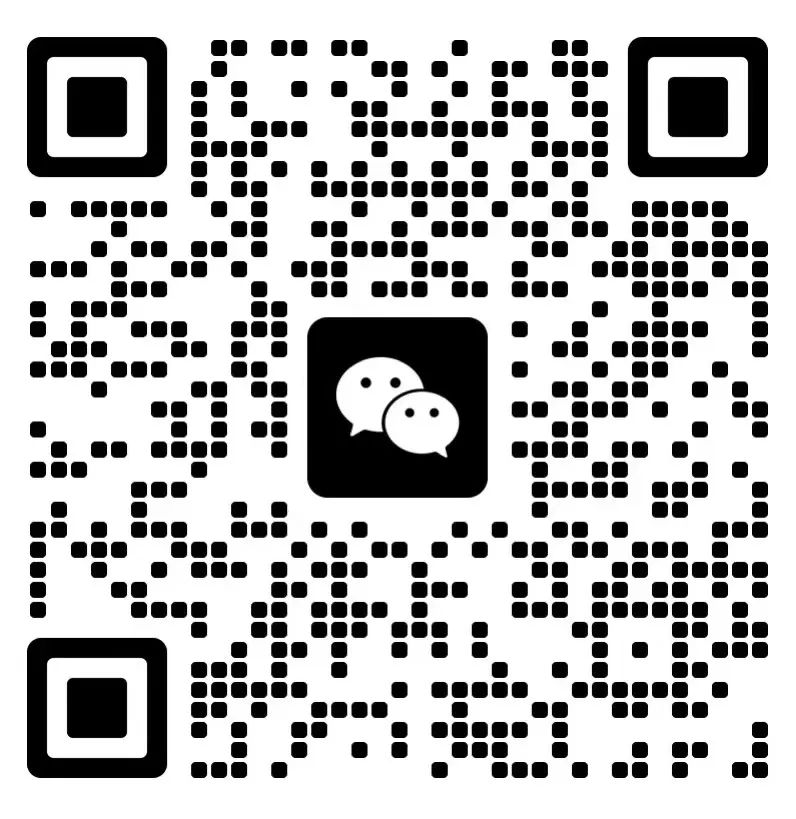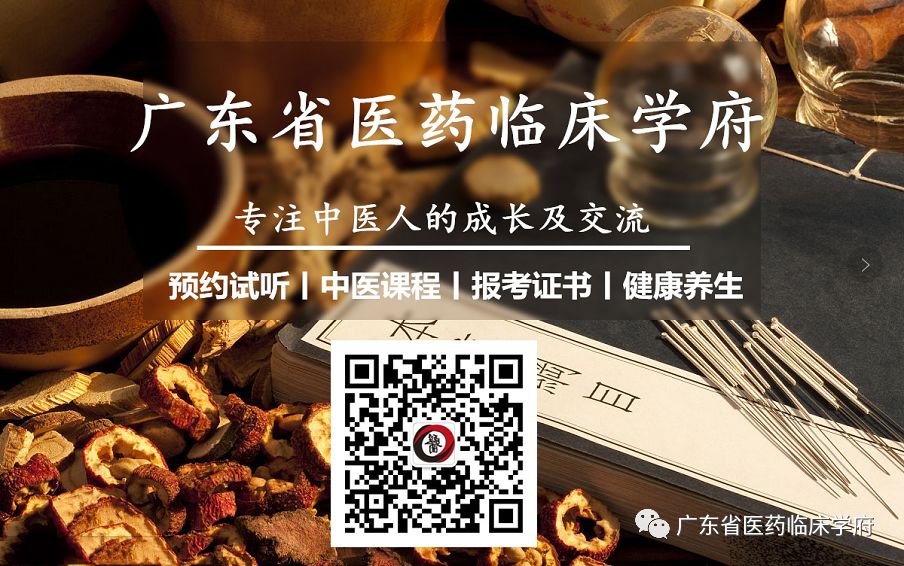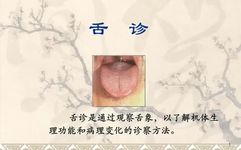Tongue diagnosis, also known as wang she (望舌), is an important method for understanding the physiological functions and pathological changes of the body by observing the changes in the tongue’s appearance. It is used to diagnose and understand diseases.
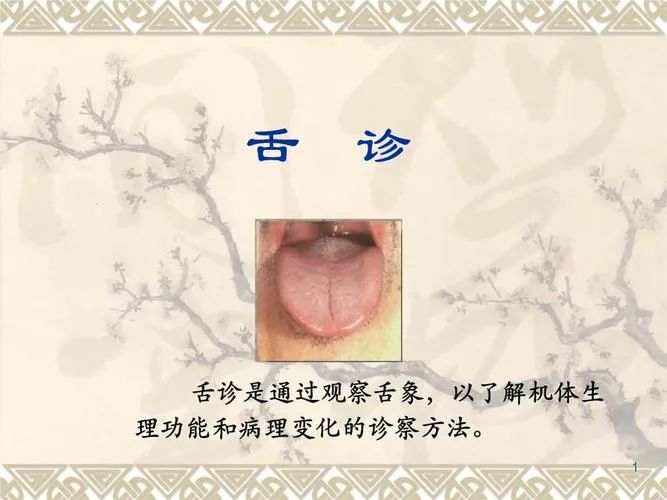
During tongue diagnosis, observation is conducted in the order of tongue tip – tongue middle – tongue sides – tongue root. First, observe the tongue body, then the tongue coating, for about 30 seconds. If the diagnosis is unclear after the first observation, allow the patient to rest for 1-3 minutes before re-examining.
Below are some commonly observed tongue appearances in clinical practice, with a focus today on tongue color, which we hope will be helpful.
Tongue Color Section
1. Normal Tongue
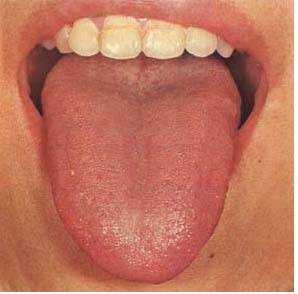
The characteristics of a normal tongue are: a light red color, moist texture, moderate size, and flexibility; the tongue coating is even, thin, white, and moist, referred to as “light red tongue, thin white coating“.
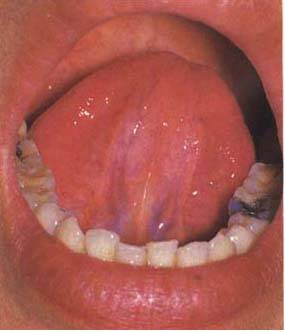
The normal sublingual veins are only faintly visible, appearing as purple-red lines, and should not be swollen. They are mostly single branches, with the largest diameter not exceeding 2.7mm, and the length generally does not exceed 3/5 of the distance from the tongue tip to the sublingual tuberosity.
2. Pale White Tongue
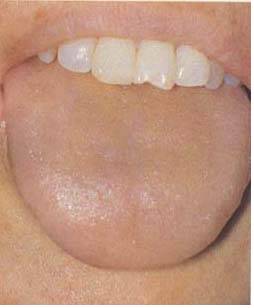
A pale white tongue is lighter than a normal tongue color and is often seen in cases of Qi and Blood Deficiency and Yang Deficiency. This image shows a pale white tongue with a thin white and moist coating, indicating Qi and Blood Deficiency.
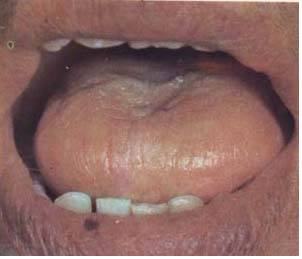
A tongue that is white with little blood color is called a dry white tongue. This image shows a dry white tongue that is wrinkled and unable to extend, indicating a lack of blood and Qi nourishment, suggesting loss of blood and Qi, indicating a serious condition.
4. Red Tongue
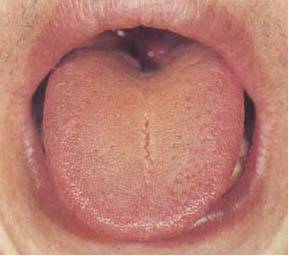
A red tongue is redder than a normal tongue or appears bright red, seen in heat syndromes. This image shows a red tongue with a thin yellow coating and a rough texture, indicating excess heat in the Qi level.
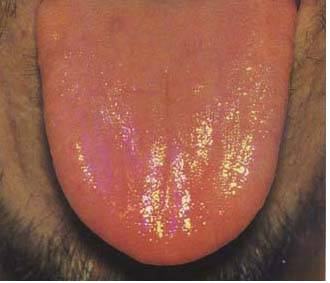
A red tip of the tongue is often seen in cases of heart fire and heat in the upper jiao. This image shows a red tip with the rest of the tongue being light red and moist, indicating excess heat in the upper jiao.
5. Crimson Tongue
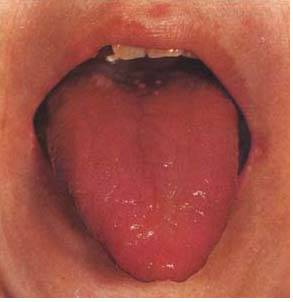
A deep red tongue, darker than a red tongue, is called a crimson tongue, indicating a heat syndrome, often due to warm diseases entering the Ying and Blood, or internal heat in the organs, or prolonged illness with Yin deficiency and excess fire, or late-stage heat diseases with Yin fluid depletion. This image shows a deep red tongue with shallow cracks and little coating, indicating excess heat, Qi and Blood stagnation, and damage to the righteous Qi.
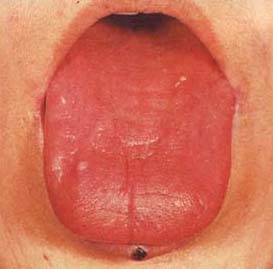
This image is from a patient with chronic stomach fire, showing a crimson tongue that is dry and without coating, with shallow cracks on the surface, indicating internal heat and depletion of Yin fluids.
6. Cyanotic Tongue
The entire tongue appears pale purple without any red color, referred to as a cyanotic tongue; a deep crimson and dark color is referred to as a purple tongue.
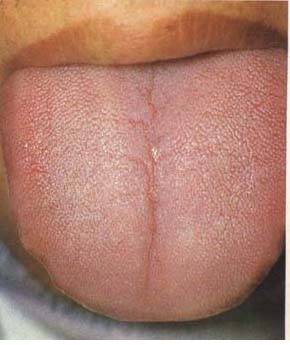
A tongue that is pale and shows cyanosis is a pale purple tongue, often due to lung Qi stagnation, liver Qi stagnation with blood stasis, or Qi deficiency that fails to promote blood circulation, leading to slow blood flow; it can also be seen in congenital heart disease or certain drug or food poisoning.
This image shows a patient with pulmonary heart disease, with a pale purple tongue and a thin white and moist coating, indicating lung Qi deficiency and poor blood circulation.
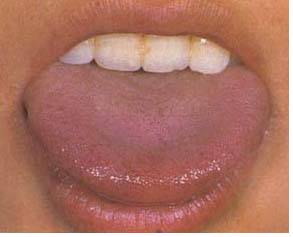
This image shows a patient with menstrual irregularities (dysmenorrhea), with a pale purple tongue and many purple stasis points, with a thin white and moist coating, indicating insufficient Yang Qi and cold congealing blood stasis.
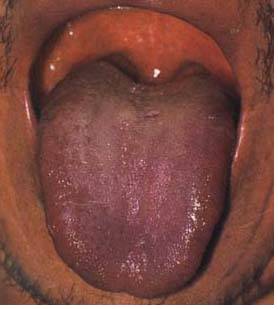
The entire tongue appearing cyanotic often indicates systemic blood stasis. This image shows a patient with a dark purple tongue and a white greasy coating, indicating phlegm-dampness retention, lung and kidney Qi deficiency, and blood stasis.
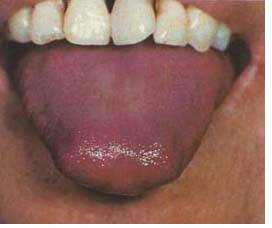
The further development of a crimson tongue is a purple crimson tongue, which is red and purple, indicating excess heat toxin, damage to the Ying Yin, and blood stasis.

Stasis spots on the tongue can be seen as purple spots, possibly indicating blood stasis in a specific area. This image shows irregularly shaped stasis spots on the sides and edges of the tongue, indicating blood stasis in the liver meridian.
Tongue Diagnosis and Corresponding Organs
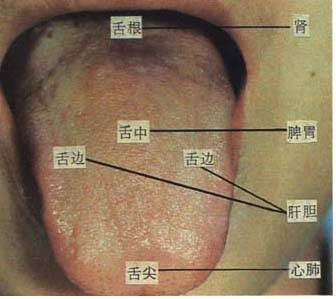
According to the Huangdi Neijing (《内经》), different parts of the tongue can reflect pathological changes in different organs, which has certain clinical reference significance. The tongue tip corresponds to the upper jiao (heart and lungs); the middle part corresponds to the middle jiao (spleen and stomach); the tongue root corresponds to the lower jiao (kidneys); and the sides of the tongue correspond to the liver and gallbladder.
Health Talent Academy · Recommended Offline Courses
Traditional Chinese Medicine Diagnosis Techniques Class
Unveiling the knowledge of TCM diagnosisTongue surface examination Pattern differentiation methodsOrgan pattern differentiation, Eight Principles pattern differentiationComprehensively focusing on TCM diagnosis to solidify TCM fundamentals


Previous graduation group photo
 Teacher Chen 18565421505
Teacher Chen 18565421505
